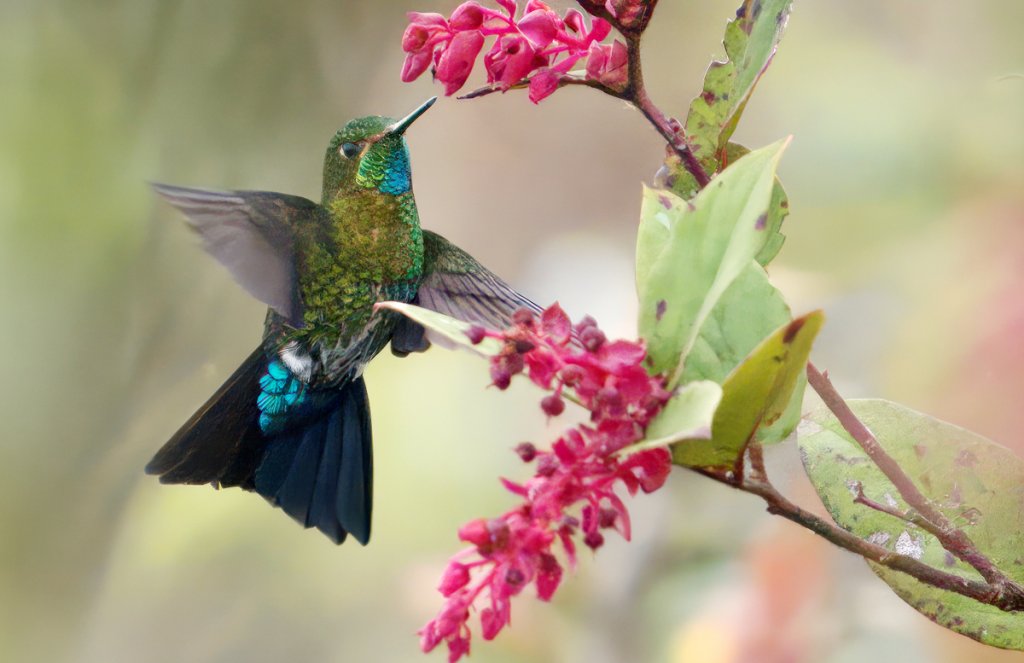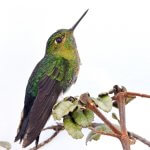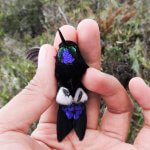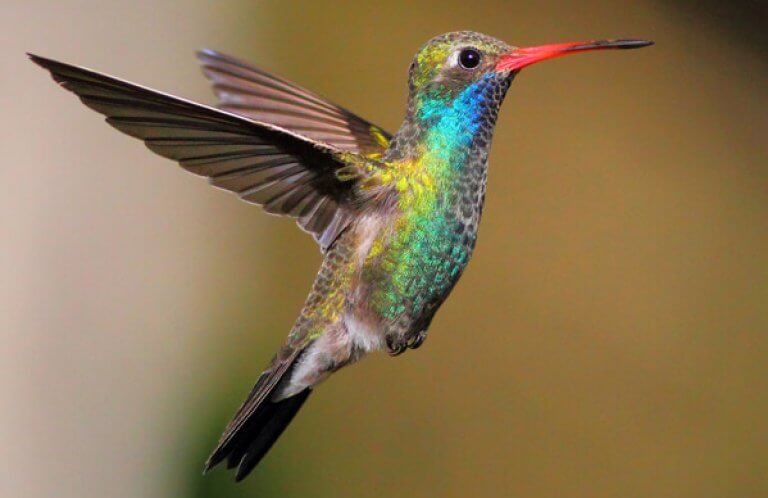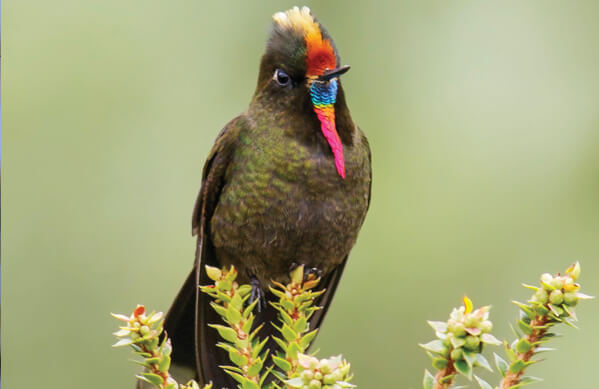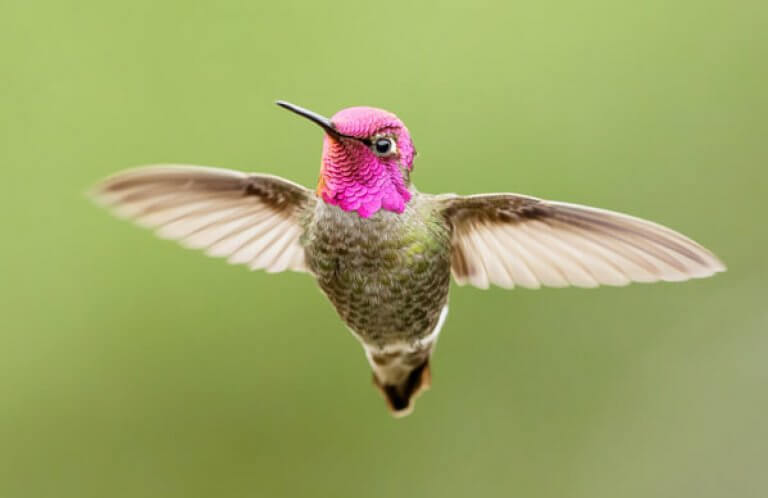About the Gorgeted Puffleg
The Critically Endangered Gorgeted Puffleg is as rare as it is beautiful; only the most dedicated birders make the trek to seek it in its rugged Andean habitat in southwestern Colombia. This hummingbird was only first discovered in 2005, and was confirmed as a species in 2007.
Even in good light, the male Gorgeted Puffleg appears dark, with touches of green, blue, and gold iridescence. The female is mostly green with a buffy tinge to her underparts. Both sexes have relatively short, straight black bills and bright white leg “puffs” (really tufts of dense, short feathers), which make the Gorgeted Puffleg and other relatives such as the equally rare Colorful and Black-breasted Pufflegs look like they're wearing fancy pants.
Gorgeous Gorget
The male Gorgeted Puffleg stands out among the puffleg tribe because of its multicolored gorget (throat patch) of sparkling violet-blue edged with glowing green. Most male hummingbirds, such as the Ruby-throated and Broad-billed Hummingbirds, also boast iridescent gorgets – but only of a single color.
Songs and Sounds
Although no recordings of Gorgeted Puffleg songs exist, one of its territorial calls has been described as a sharp “twek,” lower-pitched than the calls of its close relatives.
Breeding and Feeding
Although little is known about the Gorgeted Puffleg's breeding biology, it most likely follows the general pattern of other hummingbird species: the male holds down a breeding territory, which the female visits only to mate. She then chooses a nest location, builds a nest, and raises the young herself.
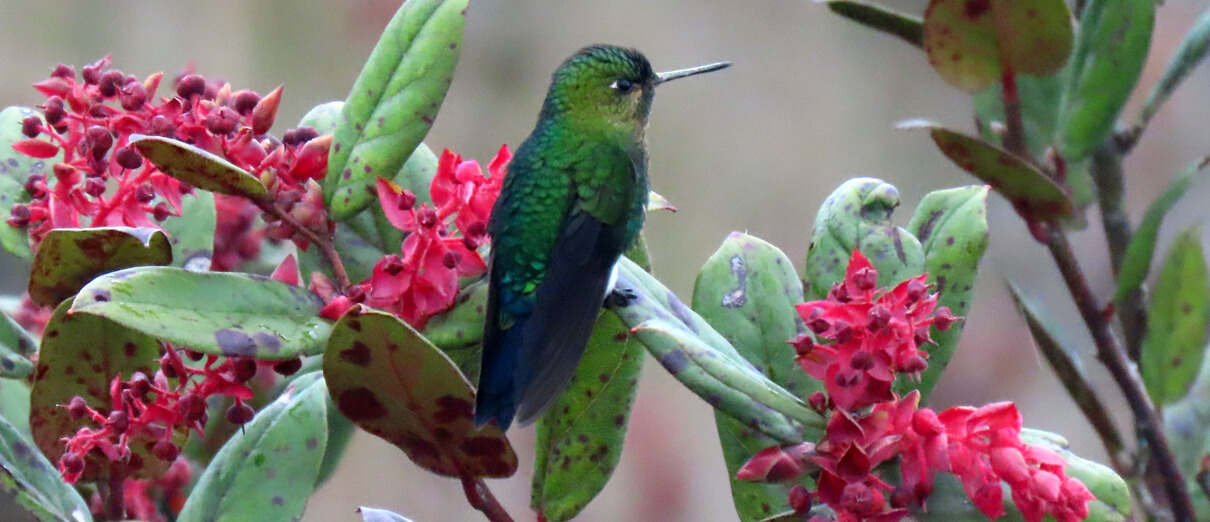
Like all hummingbirds, the Gorgeted Puffleg feeds on nectar from flowering plants and on small insects. Although not a true migrant, this mountain-dwelling species is suspected to make elevational movements to follow the flowering of plants – an adaptation seen in other altitudinal migrant hummingbirds ranging from the Rainbow-bearded Thornbill to the Anna's Hummingbird.
Region and Range
Rarest of the Rare
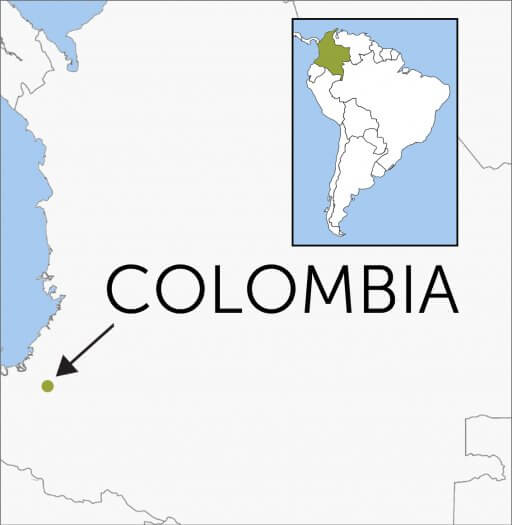
The Gorgeted Puffleg can only be found in the Andes of southwestern Colombia, where it is confined to a few areas. Efforts to find additional locations for the species are ongoing.
Conservation
The Gorgeted Puffleg has a tiny range, with even less suitable habitat within it. Habitat loss due to clearing for agriculture, ranching, and illegal crops is the biggest threat to the species. Uncontrolled fires also pose a threat.
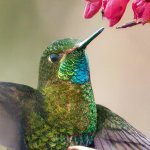
Help support ABC's conservation mission!
In 2011, ABC worked with Fundación ProAves to purchase 1,853 acres of core habitat in the buffer area of the Serrania del Pinche PA to establish the Gorgeted Puffleg Nature Reserve.
ABC worked with another partner, Fundación Ecohabitats, in 2023 to search for new localities for the Gorgeted Puffleg in Serranía del Pinche. Fundación Ecohabitats has also signed conservation agreements with four local communities in the buffer area of Serranía del Pinche to protect a total of 7,711 acres of high Andean forests and páramo – positive news for the protection of this unique hummingbird.
Get Involved
Many of the rarest bird species in the Western Hemisphere remain relatively unknown. You can learn more about these birds and the threats they face by signing up for ABC's Bird of the Week email series, which frequently highlights these fascinating birds.
American Bird Conservancy and our partners throughout Latin America and the Caribbean have created and expanded more than 100 bird reserves, which protect upward of 1.1 million acres of vital habitat. Together, we've planted more than 6.8 million trees, helping to restore degraded and damaged habitat. You can help us continue to protect endangered birds by making a gift today.





































